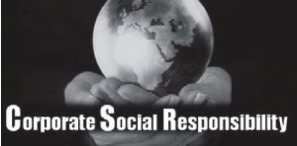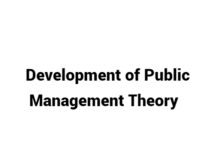Table of Contents
Corporate Social Responsibility
Passage

Broadly speaking, proponents of CSR have used four arguments to make their case: moral obligation, sustainability, license to operate, and reputation. The moral appeal—arguing that companies have a duty to be good citizens and to *do the right thing” —is prominent in the goal of Business for Social Responsibility, the leading nonprofit CSR business association in the United States. It asks that its members “achieve commercial success in ways that honor ethical values and respect people, communities, and the natural environment.” Sustainability emphasizes environmental and community stewardship.
A. An excellent definition was developed in the 1980s by Norwegian Prime Minister Gro Harlem Brundtland and used by the World Business Council for Sustainable Devebpment “Meeting the needs of the present without compromising the ability of future generations to meet their own needs.” The notion of license to operate derives from the fact that every company needs tacit or explicit permission from governments, communities, and numerous other stakeholders to do business. Finally, reputation is used by many companies to justify CSR initiatives on the grounds that they will improve a company’s image, strengthen its brand, enliven morale, and even raise the value of its stock.
B. To advance CSR, we must root it in a broad understanding of the interrelationship between a corporation and society while at the same time anchoring it in the strategies and activities of specific companies. To say broadly that business and society need each other might seem like a cliché, but it is also the basic truth that will pull companies out of the muddle that their current corporate-responsibility thinking has created Successful corporations need a healthy society. Education, health care, and equal opportunity are essential to a productive workforce. Safe products and working conditions not only attract customers but lower the internal costs of accidents. Efficient utilization of land, water, energy, and other natural resources makes business more productive. Good government, the rub of law, and property rights are essential for efficiency and innovation. Strong regulatory standards protect both consumers and competitive companies from exploitation. Ultimately, a healthy society creates expanding demand for business, as more human needs are met and aspirations grow. Any business that pursues its ends at the expense of the society in which it operates will find its success to be illusory and ultimately temporary. At the same time, a healthy society needs successful companies. No social program can rival the business sector when it comes to creating the jobs, wealth, and innovation that improve standards of living and social conditions over time.
C. A company’s impact on society also changes over time, as social standards evolve and science progresses. Asbestos, now understood as a serious health risk, was thought to be safe in the early 1900s, given the scientific knowledge then available. Evidence of its risks gradually mounted for more than 50 years before any company was held liable for the harms it can cause. Many firms that failed to anticipate the consequences of this evolving body of research have been bankrupted by the results. No longer can companies be content to monitor only the obvious social impacts of today. Without a careful process for identifying evolving social effects of tomorrow, firms may risk their very survival.
D. No business can solve all of society’s problems or bear the cost of doing so. Instead, each company must select issues that intersect with its particular business. Other social agendas are best left to those companies in other industries, NGOs, or government institutions that are better positioned to address them. The essential test that should guide CSR is not whether a cause is worthy but whether it presents an opportunity to create shared value— that is, a meaningful benefit for society that is also valuable to the business. However, Corporations are not responsible for all the world’s problems, nor do they have the resources to solve them all Each company can identify the particular set of societal problems that it is best equipped to help resolve and from which it can gain the greatest competitive benefit. Addressing social issues by creating shared value will lead to self-sustaining solutions that do not depend on private or government subsidies. When a well-run business applies its vast resources, expertise, and management talent to problems that it understands and in which it has a stake, it can have a greater impact on social good than any other institution or philanthropic organization.
E. The best corporate citizenship initiatives involve far more than writing a check: They specify clear, measurable goals and track results over time. A good example is GE’s program to adopt underperforming public high schools near several of its major u.s. facilities. The company contributes between $250,000 and $1 million over a five-year period to each school and makes in-kind donations as well GE managers and employees take an active role by working with school administrators to assess needs and mentor or tutor students. In an independent study of ten schools in the program between 1989 and 1999, nearly all showed significant improvement, while the graduation rate in four of the five worst performing schools doubled from an average of 30% to 60%. Effective corporate citizenship initiatives such as this one create goodwill and improve relations with local governments and other important constituencies. What’s more, GE’s employees feel great pride in their participation. Their effect is inherently limited, however. No matter how beneficial the program is, it remains incidental to the company’s business, and the direct effect on GE’s recruiting and retention is modest.
F. Microsoft’s Working Connections partnership with the American Association of Community Colleges (AACC) is a good example of a shared-value opportunity arising from investments in context. The shortage of information technology workers is a significant constraint on Microsoft’s growth; currently, there are more than 450,000 unfilled IT positions in the United States alone. Community colleges, with an enrollment of 11.6 million students, representing 45% of all U.S. undergraduates, could be a major solution. Microsoft recognizes, however, that community colleges face special challenges: IT curricula are not standardized, technology used in classrooms is often outdated, and there are no systematic professional development programs to keep faculty up to date. Microsoft’s $50 million five-year initiative was aimed at all three problems. In addition to contributing money and products, Microsoft sent employee volunteers to colleges to assess needs, contribute to curriculum development, and create faculty development institutes. Note that in this case, volunteers and assigned staff were able to use their core professional skills to address a social need, a far cry from typical volunteer programs. Microsoft has achieved results that have benefited many communities while having a direct—and potentially significant—impact on the company.
G. At the heart of any strategy is a unique value proposition: a set of needs a company can meet for its chosen customers that others cannot. The most strategic CSR occurs when a company adds a social dimension to its value proposition, making social impact integral to the overall strategy. Consider Whole Foods Market, whose value proposition is to sell organic, natural and healthy food products to customers who are passionate about food and the environment. The company’s sourcing emphasizes purchases from local farmers through each store’s procurement process. Buyers screen out foods containing any of nearly 100 common ingredients that the company considers unhealthy or environmentally damaging. The same standards apply to products made internally. Whole Foods’ commitment to natural and environmentally friendly operating practices extends well beyond sourcing. Stores are constructed using a minimum of virgin raw materials. Recently, the company purchased renewable wind energy credits equal to 100% of its electricity use in all of its stores and facilities, the only Fortune 500 company to offset its electricity consumption entirely. Spoiled produce and biodegradable waste are trucked to regional centers for composting. Whole Foods’ vehicles are being converted to run on biofuels. Even the cleaning products used in its stores are environmentally friendly. And through its philanthropy, the company has created the Animal Compassion Foundation to develop more natural and humane ways of raising farm animals. In short, nearly every aspect of the company’s value chain reinforces the social dimensions of its value proposition, distinguishing Whole Foods from its competitors.
From Harvard business review 2007
Questions
Questions 14-20
The reading passage has seven paragraphs, A-G
Choose the correct heading for paragraphs A-G from the list below. Write the correct number, i-xi, in boxes 14-20 on your answer sheet.
List of Headings
I. How CSR may help one business to expand
II. CSR in many aspects of a company’s business
III. A CSR initiative without a financial gain
IV. Lack of action by the state of social issues
V. Drives or pressures motivate companies to address CSR
VI. The past illustrates business are responsible for future outcomes
VII. Companies applying CSR should be selective
VIII. Reasons that business and society benefit each other
—————————————————————————–
14. Paragraph A
15. Paragraph B
16. Paragraph C
17. Paragraph D
18. Paragraph E
19. Paragraph F
20. Paragraph G
Questions 21-22 Summary
Complete the following summary of the paragraphs of Reading Passage, using no more than two words from the Reading Passage for each answer. Write your answers in boxes 21-22 on your answer sheet.
The implement of CSR, HOW?
Promotion of CSR requires the understanding of interdependence between business and society. Corporations workers’ productivity generally needs health care, Education, and given 21……………Restrictions imposed by government and companies both protect consumers from being treated unfairly. Improvement of the safety standard can reduce the 22 ……………of accidents in the workplace. Similarly society becomes pool of more human needs and aspirations.
Questions 23-26
Use the information in the passage to match the companies (listed A-C) with opinions or deeds below. Write the appropriate letters A, B or C in boxes 23- 26 on your answer sheet.
List of companies
A. General Electronics
B. Microsoft
C. Whole foods market
NB: you may use any letter more than once
23. The disposable waste
24. The way company purchases as goods
25. Helping the undeveloped
26. ensuring the people have the latest information
Answers



